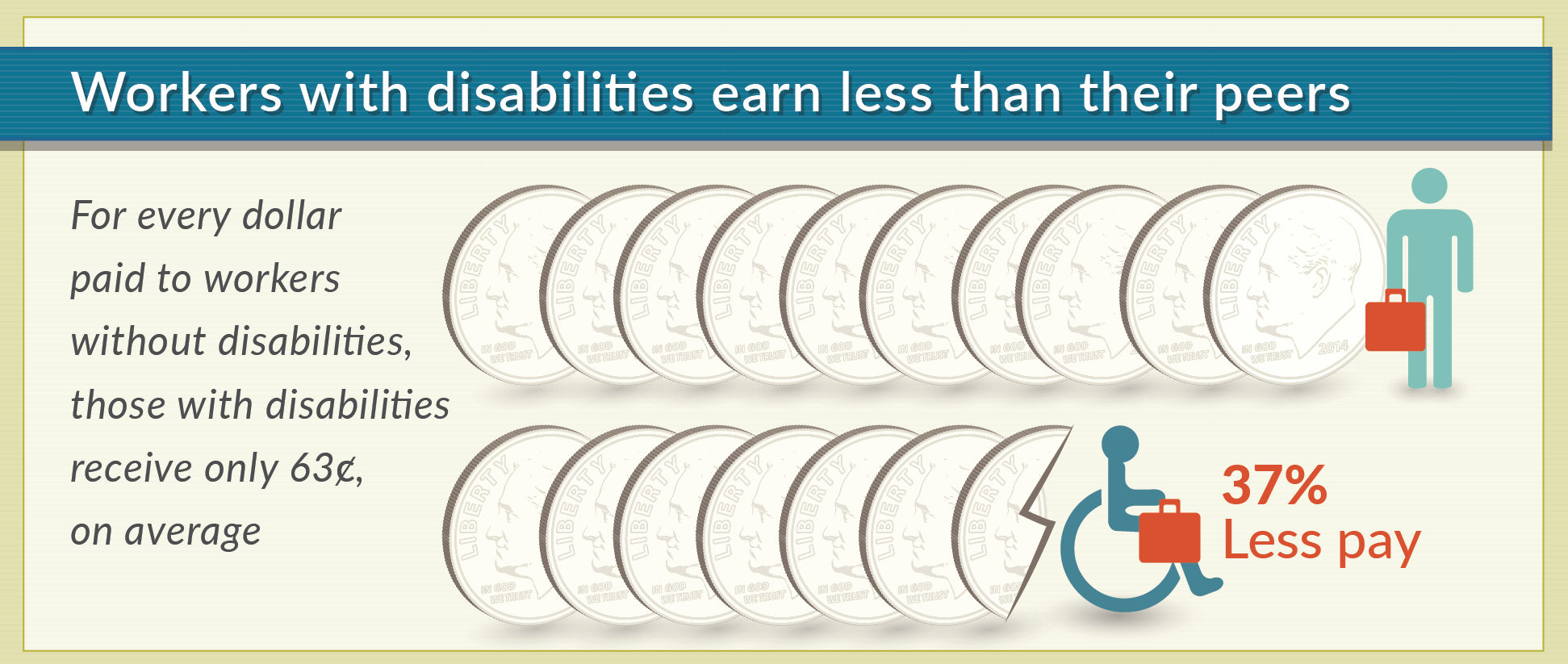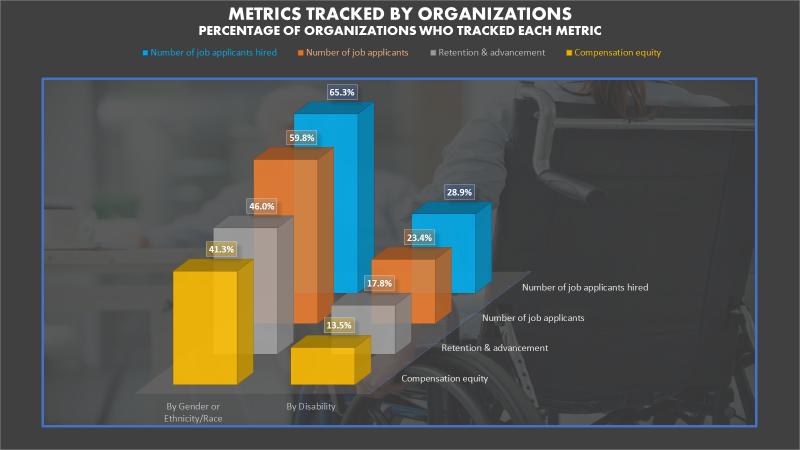 Source: American Institute for Research air.org
Source: American Institute for Research air.org
In many ways, diversity & inclusion has become shorthand for trying to improve gender diversity, and in a positive sign, growing racial diversity as well. However, as D&I initiatives spread across our industry, the disabled population remains largely ignored. This leads to missed opportunities for companies to hire the best and the brightest, and it leads the disabled community to lower employment rates and lower economic advantage.
Cambridge is home to Kendall Square, the ‘most innovative square mile on the planet’. If we look at the data provide by the City of Cambridge and use it as an example, the disparity in median income between disabled and non-disabled residents has grown in the last five years to more than $22,000 as the incomes of non-disabled residents have risen and the incomes of disabled residents have fallen. In 2016, disabled residents’ median income was 45% of non-disabled residents; in 2012 the same figure was 69%. If this is happening in Cambridge, what’s happening in other municipalities that don’t have the massive resources of the tech and biotech sectors?
Lisa Hemmerle, Director of Economic Development for the City of Cambridge, says that her office is working on strategies to address the disabled community’s lack of job opportunities and lower wages as part of their “Envision Cambridge” plan. Lisa also oversees Life Sciences Corridor, a regional economic development initiative focused on the life sciences sector that analyzes the skilled labor force availability; universities advancing academic science fields; the proximity of innovative research to major hospitals, and the strategic presence of venture capital resources.
In her role, Lisa, who uses a wheelchair due to a spinal cord injury, says that she sees many more persons with disabilities in government, though rarely executive/C-level, and more often they are Commissioners of Disability at the State or municipal level. Recently, Lisa noted:
“In my experience, companies are not partnering with organizations that support people with disabilities like social services, transitioning offices, non-profits that are active in this community unless their products are impacting these populations as a cure or a remedy to a secondary condition to their disability. Based on the poor employment levels for persons with disabilities and shrinking income levels, I think the needle is going backwards. Part of this may be that access to SSDI and therefore Medicare and Medicaid regs which restrict the amount of income you are allowed to make before you lose your benefits. Therefore, you have to make a big salary jump with benefits to make becoming fully employed tenable. This is my personal experience having once needed SSDI as a person having an acquired disability.”
 Data Source: The New York State School of Industrial and Labor Relations at Cornell University (ILR) Bulletin
Data Source: The New York State School of Industrial and Labor Relations at Cornell University (ILR) Bulletin
As an industry, we have initiatives that support women and minority career advancement in biotech but, I can’t find this information for people with disabilities. This leads me to believe that more must be done across the industry to collect and analyze data on disabled workers and how to increase those numbers.
In biotech, we are experiencing an inclusion revolution. There are many contributions from people with disabilities. They are talented, creative, capable, adaptable with tremendous work ethics and add value to any organization. Let’s focus on THESE abilities and not their disability status. Here are examples of policy and best practices recommendations:
- Flexible work arrangements for all employees
- Have a return to work or disability management program
- Be participatory, actively and meaningfully involving people with disabilities in all matters concerning them in the process of forming policies and best practices
- Include a gender perspective
- Be results-based and focus on producing measurable change that contributes to the improvement in the workplace for those with disabilities
- Have a robust monitoring and evaluation system that includes the collection of data on people with disabilities
- Education about disability inclusion across the entire organization is critical
- Increase awareness and understanding of disabilities to promote positive attitudes, since stigmatization is considered one of the major causes of exclusion
All employees should have the same opportunities for career advancement. This underrepresented group should have the same pipeline programs. We will benefit as an industry because the greater the mix, the more possibilities for patient outcomes and a closer reflection to society. If we can have Call-to-Actions to reduce the gender pay inequalities and improve racial diversity, we should also commit to diminishing the disability equity gap. The life sciences industry can demonstrate leadership through better tracking methods, recruitment practices and procurement policies. As a society, for real progress, we must support employers and organizations that engage the disAbility population.